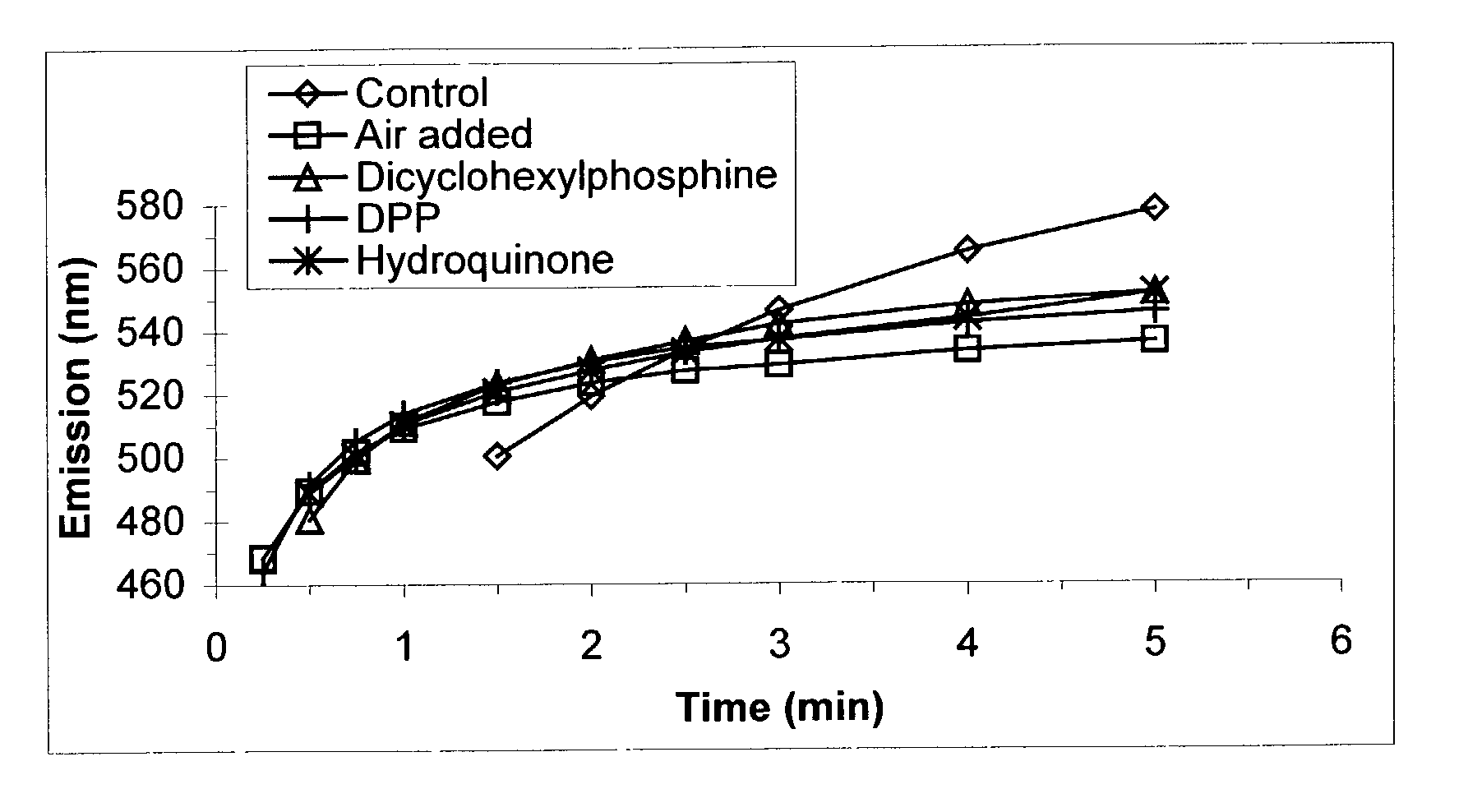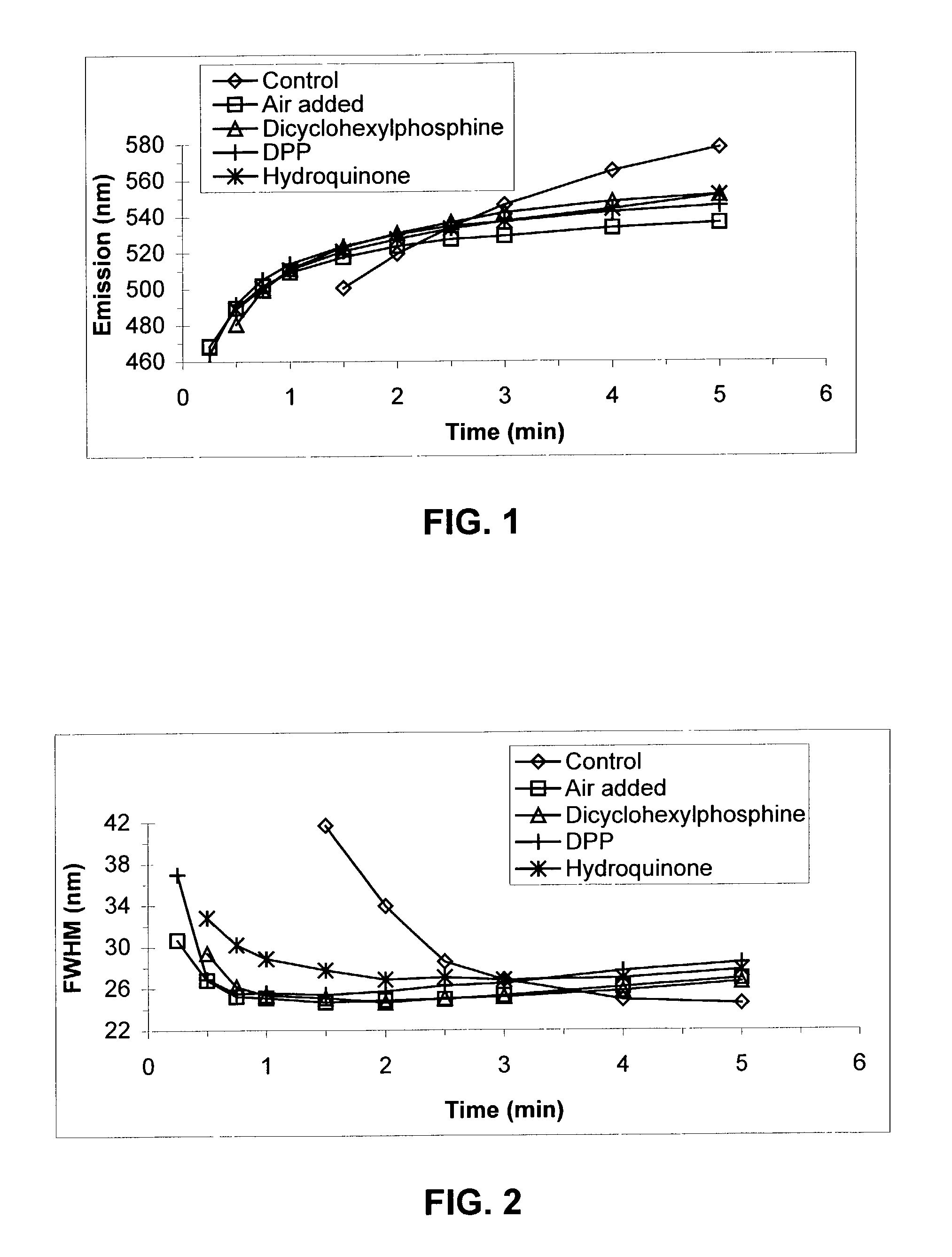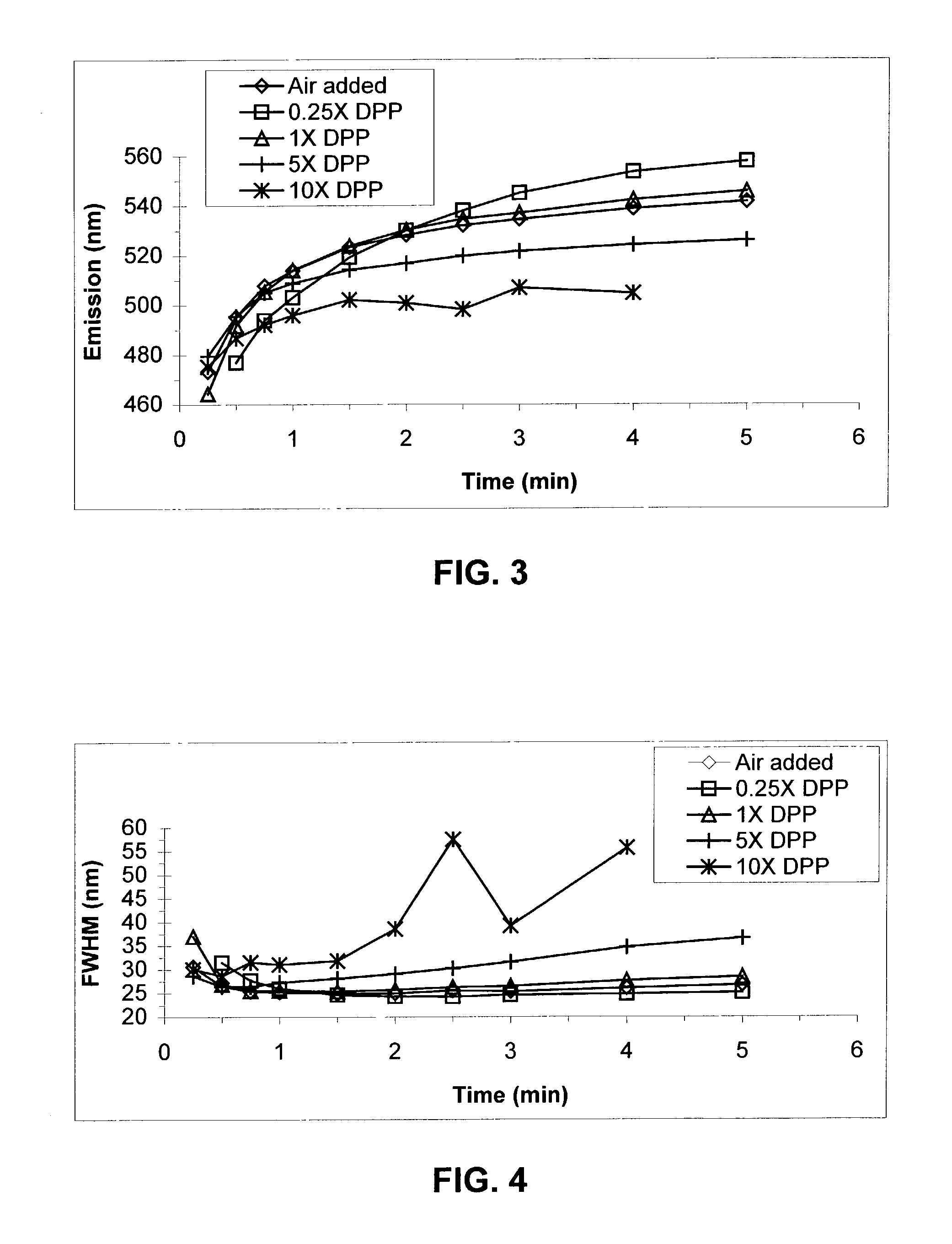Method of semiconductor nanoparticle synthesis
a technology of nanoparticles and nanoparticles, applied in the field of nanoparticles, can solve the problems of unacceptably low quantum yield of most applications, high degree of polydispersity, and high degree of internal defects, so as to stop the growth of nanoparticles, and stop the growth of shells
- Summary
- Abstract
- Description
- Claims
- Application Information
AI Technical Summary
Benefits of technology
Problems solved by technology
Method used
Image
Examples
example 1
Reactions with Phosphines Added
[0111]TOPO (6.0 g) and TDPA (0.577 g) were combined in a three-neck round bottom flask equipped with a stir bar, a thermocouple attached to a temperature controller unit, and a condenser connected to a nitrogen / vacuum manifold. The third neck was sealed with a septum. The atmosphere inside the reactor was evacuated once and refilled with dry nitrogen. Inside an inert atmosphere glove box, a cadmium precursor solution (0.5 m) was prepared by combining cadmium acetate (21.6 g) and TOP (166 g) and allowing the mixture to stir for˜24 hours until fully dissolved. An aliquot (2.03 g) of this solution was diluted with TOP (3.6 mL) and injected via syringe into the reaction vessel. A 16-gauge needle was inserted into the septum of the reaction vessel so that the vessel could be continuously flushed with nitrogen for approximately 10 min as the reaction was heated to 250° C. The needle was removed and heating continued to 260° C. Heating was continued at 260–27...
example 2
Reactions with Hydroquinone Added
[0113]These reactions were carried out as described in Example 1, with the following modifications. No phosphine-based reaction promoter was added to these reactions. Instead hydroquinone (0.226 g) was combined with the TOPO and TDPA solids prior to the nitrogen flush of the reactor in the first step.
example 3
Reactions Demonstrating the Use of Air as a Reagent
[0114]In this example, TOP was obtained from Fluka and used as received. A solution of Se was prepared by dissolving Se (3.16 g) in TOP (33.2 g) (TOPSe). Separately, a cadmium precursor stock solution was prepared by dissolving anhydrous cadmium acetate (6.15 g) in TOP to a final volume of 40 mL (cadmium stock solution). In each of three round bottom flasks, TOPO (5.0 g) was combined with cadmium stock solution (1.4 mL), TDPA (0.52 g), and TOP (1.1 mL) and heated to 250° C. while continuously flushing the vessel with N2. Once the temperature reached 250° C., the nitrogen flush was halted and the temperature was increased to 270° C. This temperature was maintained for 20 min and the solutions were cooled to 100° C. Using a large-bore needle, dry air was directed into each of two flasks at a rate of 200 ml / min for a duration of 1 minute or 10 minutes. A third flask received dry nitrogen for 10 minutes at the same flow rate. Stirring o...
PUM
| Property | Measurement | Unit |
|---|---|---|
| emission peak wavelength | aaaaa | aaaaa |
| emission peak wavelength | aaaaa | aaaaa |
| emission peak wavelength | aaaaa | aaaaa |
Abstract
Description
Claims
Application Information
 Login to View More
Login to View More - R&D
- Intellectual Property
- Life Sciences
- Materials
- Tech Scout
- Unparalleled Data Quality
- Higher Quality Content
- 60% Fewer Hallucinations
Browse by: Latest US Patents, China's latest patents, Technical Efficacy Thesaurus, Application Domain, Technology Topic, Popular Technical Reports.
© 2025 PatSnap. All rights reserved.Legal|Privacy policy|Modern Slavery Act Transparency Statement|Sitemap|About US| Contact US: help@patsnap.com



